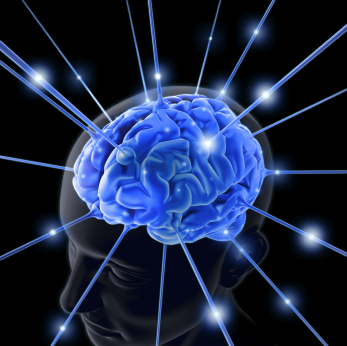
 |
1. Subjects are placed in front of a monitor having a clock with a moving needle and they are asked to focus on the clock and press a button (is placed 1cm below the right index finger of the subject) which they cannot see .
2. Active (subject initiated ) and passive(experimenter initiated) actions are performed in which the subjects report the instant (by reporting the position of the clock needle on the monitor) at which they consciously feel the need to press a button. The actual button press time is monitored using Electromyography (EMG) equipments.
3. In an active action initiation the patient himself presses the button whenever he feels like , whereas the passive action involves the experimenter pushing the subject’s finger onto the key.
An optional EEG can also be simultaneously performed on the subject to determine the unconscious action initiation process in the brain.

1. The first signs of any intention to perform an action are observed in the pre supplementary motor area of the brain using Electroencephalography(EEG).This is an unconsciousness process , the subject is unaware of his future actions at this stage.
2.After a very negligible amount of time(~few milliseconds) an efferent signal originates from the complex Central Nervous System(CNS) that intends to stimulate motor signals at a later stage. Simultaneously an efference copy is generated that is an exact replica of the efference signal .This efference signal is fed as the input into the forward internal model (a black box).This black box reads, analyses, manipulates the continuously increasing efference copy signal and weaves out another continuously increasing afference signal(called the corollary discharge) which is actually the slowly growing sensory output that is expected when the action is finally executed. In short this system is predicting the sensory output of the would be executed efferent signal.
3. As the main efference signal builds so does the corollary discharge and when a certain signal threshold is crossed by the accumulation of predicted sensory outputs , the subject becomes aware of his will to perform the action. Consciousness is first felt at this instant. The time gap between (1) and (3) is approximately 300 ms (Libet, B., Gleason, C. A., Wright, E. W., and Pearl, D. K. (1983). Time of conscious intention to act in relation to onset of cerebral activity (readiness-potential). The unconscious initiation of a freely voluntary act. Brain, 106:623-642, Libet, B. (1985). Unconscious cerebral initiative and the role of conscious will in voluntary action. Behavioral and Brain Sciences, 8:529-566. )The sensory accumulator model (Aschersleben et al , 2004) predicts the onset of consciousness through sensory information accumulation. Ideally at this instant the subject has performed the action mentally but a certain preparation time is required for muscle adjustment for the action to be performed physically.
4. After a gap of 120-150 ms from (3) (Libet,1985) the subject’s muscles start preparing for action execution , premotor responses are induced .
5. Finally, after a gap of 80 to 50 ms from (4) the action is performed. Just when the action is performed the efference signal would have completed its journey and a predicted outcome of the above mentioned efference signal would be kept ready. This is then compared with the actual reafferent signal to determine if the afferent signal is because of a self- generated efferent signal or if the afferent signal was caused due to any other external stimulus. This process of comparison is the mechanism to differentiate self from other .
1.Perform the button pressing procedure as an actively conscious action on the patient and note the two timings , one told by the patient himself and the other from the EMG measurements.
2. Perform the above as a passive process i.e the button pressed by the subject with the help of the experimenter.
1.In the actively driven procedure ideally I would not expect the subject to report the time instant of conscious action performance , i.e there is no conscious awareness until the action is performed .The subject realises that he has pressed the button only after he has actually pressed the button(through the reafferent signal) because there is no proper corollary discharge(predicted output signal) and in my opinion corollary discharge is the entity that governs consciousness.
2.In the passively driven procedure ideally I would not expect any differences between all the results observed amongst both affected subjects and normal healthy subjects because the entire process starts at (3).The idea of consciousness here is different from the one that exists in the active case.
1.Sukhvinder S.Obhi , (Evidence for feedback dependent conscious awareness of action(Brain Research,2007 1161:88-94).
2.Libet, B. (1985) Unconscious cerebral initiative and the role of conscious will in voluntary action. Behavioural and Brain Sciences, 8: 529–566.
3. Irwin Feinberg (Efference copy and corollary discharge: implications for thinking and its disorders . Schizophrenia bulletin 1978;4(4):636-40.)